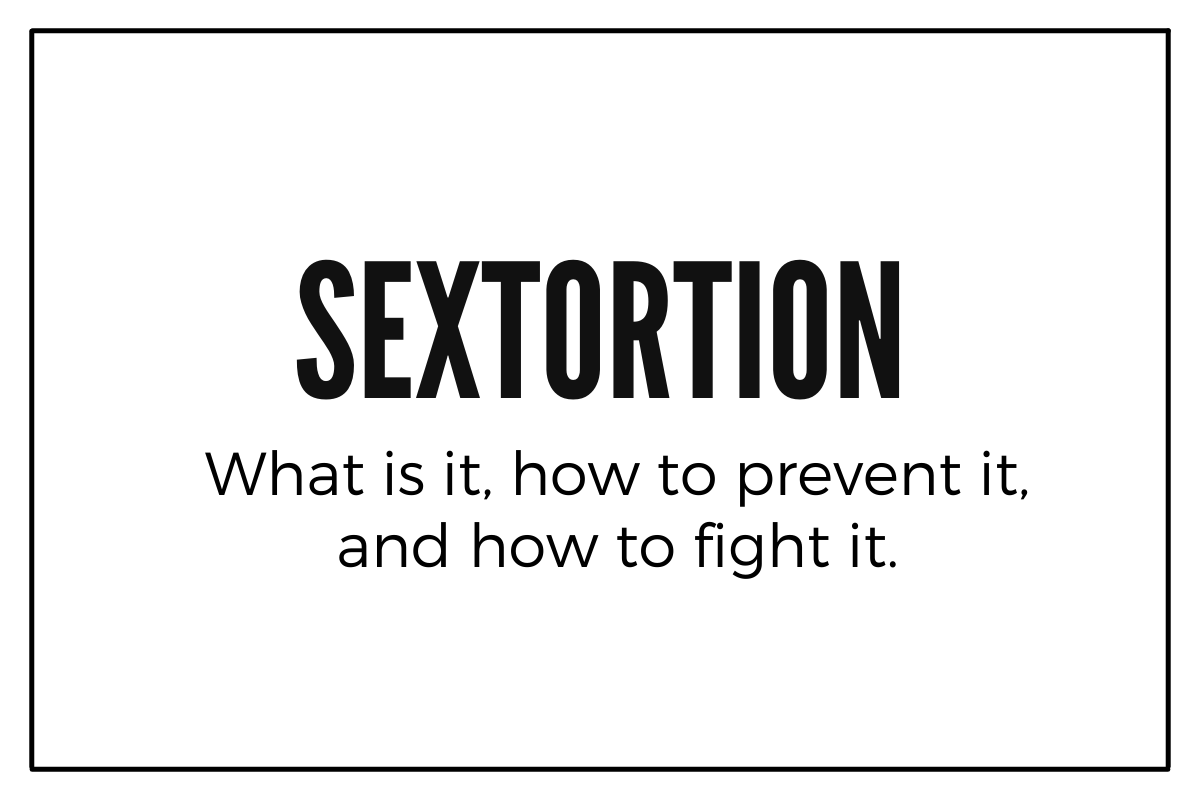Sextortion meaning: This is a new form of cybercrime that has surfaced, posing serious threats to individuals’ privacy and well-being.
This comprehensive article delves into the intricate aspects of sextortion, a modern-day menace that has proliferated in the shadows of the digital landscape. By unpacking the nature of this crime, its impact on victims, the methods employed by perpetrators, and the legal frameworks in place, we aim to shed light on this complex issue and provide valuable insights for prevention, support, and response.
Table of Contents:
- What is Sextortion?
- The Victims and Perpetrators
- Characteristics of Victims and Perpetrators
- Psychological Impact on Victims
- Forms of Sextortion
- Methods Used (Social Media, Email, etc.)
- The Role of Privacy and Cybersecurity
- Legal Aspects and Support Services
- Legal Consequences for Perpetrators
- Support Services for Victims
- Prevention and Reporting
- How to Protect Oneself from Becoming a Victim
- Steps to Take if You Are a Victim of Sextortion
- Final Words
1. What is Sextortion?
Sextortion has become a growing concern. This form of blackmail, involving the threat of exposing private images or videos, forces victims to provide sexual favors, additional explicit content, or money. It capitalizes on the fear of public exposure to intimate interactions.
The digital age, with its easy access to personal information and the widespread use of social media and online communication, has significantly increased sextortion incidents. The internet’s anonymity further empowers perpetrators, creating a breeding ground for this crime.
According to “Extortion Cases Reported to the FBI” “In 2022, the FBI’s Internet Crime Complaint Center (IC3) received 39,416 cases of extortion, with the figures being nearly similar in 2021 (39,360 cases). These statistics underscore the growing scope and sophistication of cyber-enabled crimes Globally.”
Who does Sextortion affect?
Sextortion affects a wide range of individuals, from teenagers and young adults in online relationships to adults in various digital environments. Its effects are severe, often leaving victims with lasting psychological trauma.
2. The Victims and Perpetrators
a. Characteristics of Victims and Perpetrators
Sextortion involves a complex dynamic between the victim and the perpetrator. Victims can be of any age, gender, or socioeconomic background, though research often points to adolescents and young adults as particularly vulnerable due to their frequent online presence and sometimes naivety in digital interactions. According to an ICE’s report: “There has been a 300% increase in sextortion-related cases from 2016 to 2020. A notable portion of the victims, over 50%, are aged between 18 and 24 years old. In 2019, about 95% of sextortion victims reported to the FBI were female.”
Perpetrators, on the other hand, range from individuals seeking power or financial gain to organized criminal networks exploiting vulnerabilities on a larger scale. They often possess a deep understanding of digital platforms and use this knowledge to manipulate and control their victims.
The National Center for Missing & Exploited Children (NCMEC) notes that financial sextortion is increasing. Currently, as many as 79% of predators are seeking money rather than additional sexual imagery.
b. Psychological Impact on Victims
The psychological toll of sextortion on victims is profound and far-reaching. Victims often experience intense feelings of fear, shame, and isolation. The constant threat of exposure can lead to anxiety, depression, and in extreme cases, suicidal thoughts. The violation of trust and personal safety in their digital lives can also lead to long-term difficulties in forming trusting relationships, both online and offline.
3. Forms of Sextortion
a. Methods Used (Social Media, Email, etc.)
Sextortionists employ a variety of methods, leveraging the tools and platforms where individuals engage most. Social media platforms, where personal information is readily shared, are common hunting grounds. Perpetrators might create fake profiles to initiate relationships or hack into existing accounts to access compromising material. Email phishing is another tactic used to gain sensitive information or images, often through deceitful links or fraudulent security alerts.
b. The Role of Privacy and Cybersecurity
In the context of sextortion, privacy and cybersecurity are paramount. Victims often find themselves targeted due to lapses in digital security practices, such as weak passwords or shared personal information on unsecured websites. Increasing awareness and education about maintaining digital privacy and implementing robust cybersecurity measures are crucial in preventing sextortion. This includes understanding privacy settings on social platforms, being cautious about sharing personal information online and being aware of common phishing tactics and online scams.
4. Legal Aspects and Support Services
a. Legal Consequences for Perpetrators
The legal ramifications for sextortion are significant and vary depending on the jurisdiction. In many regions, sextortion is a criminal offense, encompassing charges like sexual harassment, extortion, and cybercrimes. Perpetrators can face severe penalties, including imprisonment, fines, and a permanent criminal record. Law enforcement agencies are increasingly skilled in digital forensics, aiding in the tracking and prosecution of online sexual extortionists. However, the anonymous nature of the Internet can make legal proceedings complex and challenging.
b. Support Services for Victims
Victims of sextortion have access to a range of support services. These include counseling and psychological services, legal advice, and online safety guidance. Many organizations, both governmental and non-governmental, offer hotlines, online chats, and resource centers specifically designed to assist sextortion victims. These services provide confidential advice, emotional support, and practical steps for dealing with the aftermath of sextortion.
Here are some key organizations offering support for sextortion victims:
- Cyber Civil Rights Initiative (CCRI) Crisis Helpline: Offers a 24/7 helpline for victims of nonconsensual pornography, recorded sexual assault, or sextortion in the U.S. Call 1-844-878-CCRI (2274) or visit CCRI’s website.
- National Sexual Violence Resource Center (NSVRC): Provides advocacy, support, and referrals for sexual assault victims. Visit NSVRC’s website for more information.
- Thorn: Supports sextortion victims with resources and advice. For immediate help, text “THORN” to 741741. Learn more at Thorn’s website.
- National Center for Missing & Exploited Children (NCMEC): Offers crisis intervention, emotional support, and legal assistance. Visit NCMEC’s support page for more details.
5. Prevention and Reporting
a. How to Protect Oneself from Becoming a Victim
Preventing sextortion involves a proactive approach to online safety. This includes:
- Practicing strong digital hygiene: using strong, unique passwords for different accounts and enabling two-factor authentication.
- Being cautious about sharing personal information and images online, especially with strangers.
- Educating oneself about common online scams and phishing techniques.
- Regularly reviewing and adjusting privacy settings on social media and other online platforms.
b. Steps to Take if You Are a Victim of Sextortion
For those who find themselves victims of sextortion, immediate and decisive action is crucial:
- Do Not Comply with the Demands: Complying with the extortionist’s demands often leads to further demands, not a resolution.
- Preserve Evidence: Save all communications, including emails, messages, and screenshots of any interactions.
- Contact Authorities: Report the incident to the local police, especially if there are immediate threats. In many cases, law enforcement can take steps to track the perpetrator.
- Seek Legal Advice: Understanding your legal rights and options is crucial. Legal professionals can guide you through the process of legal redress.
- Access Support Services: Reach out to support groups or counseling services for emotional and psychological support.
6. Final Words
As we progress through the digital age, the risk of sextortion looms large, and all internet users must be vigilant, aware, and proactive. This article has examined the multifaceted nature of sextortion, including its psychological impact, legal ramifications, and the preventive measures that can be taken to protect oneself. It is crucial to remember that the best way to combat sextortion is through education, strong digital habits, and the courage to seek help and report these crimes. Let us work together to create a safer digital environment where privacy is respected and cybercrimes like sextortion cannot flourish.
Diego Asturias is a tech journalist who transforms complex tech jargon into engaging content. He holds a degree in Internetworking Tech from Washington, DC, and certifications from Cisco, McAfee, and Wireshark. With hands-on experience in Latin America, South Korea, and West Africa, he has been featured in SiliconANGLE Media, Cloudbric, Pcwdld, Hackernoon, ITT Systems, SecurityGladiators, Rapidseedbox, and more.


![Read more about the article Incogni Review [2023]](https://www.incognitown.com/wp-content/uploads/2023/10/incogni_review_2023_7-300x173.png)

